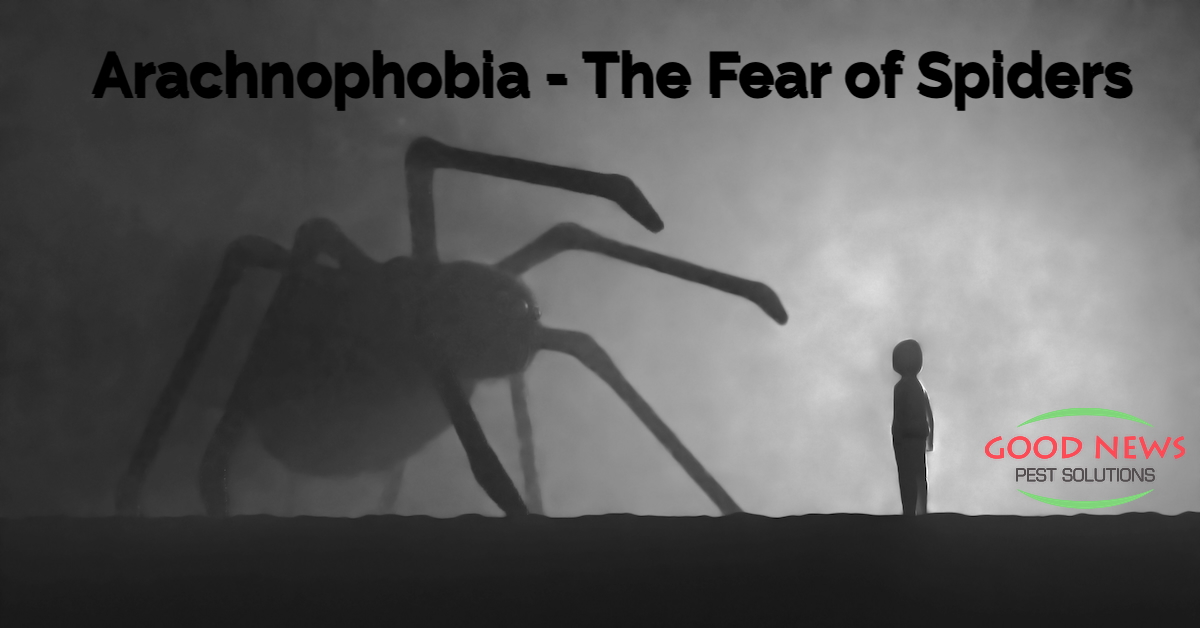
Arachnophobia - The Fear of Spiders
It’s one of our most primal fears. We’re not even sure how or why, but some researchers say it’s even embedded in our DNA. So why do we find spiders so scary?
Defining Arachnophobia
To be clear, Arachnophobia is a specific, medical diagnosis. The Diagnostic and Statistical Manual of Mental Disorders, 5th Edition (DSM-V) defines a phobia as a, “marked and persistent fear that is excessive or unreasonable, cued by the presence or anticipation of a specific object or situation.” Arachnophobia, or arachneophobia, falls under a more specific animal-connected fear.
It involves significant anxiety and avoidance of spiders – and other arachnids. The fear or anxiety is out of proportion to the actual danger posed by the specific object or situation and to the sociocultural context. Exposure provokes an immediate anxiety response, often a panic attack. The object or situation is actively avoided or endured with intense fear or anxiety. It must cause clinically significant distress or impairment in social, occupational, or other important areas of functioning, and symptoms must be present for at least six months.
Anyone at any age can develop arachnophobia, but most develop it in childhood and adolescence. And arachnophobia is more common in females than males. While most people have some fear of spiders, only 3-15% of the population actually suffer from true arachnophobia.
Eight Legged Freaks
True arachnophobia isn’t just triggered by the sight of a spider or spider web. Just thinking about it can trigger a reaction. You feel anxious about seeing or thinking about spiders or spider webs. You can go into full-blown panic without ever coming anywhere near a spider, worrying about the chance you’ll run into one.
One weird side effect of arachnophobia is that spiders appear to be much larger than they actually are. And that perception shift gets worse the closer you get to a spider. Imagine being deathly afraid of spiders and the closer you get to it, the bigger the spider appears. Talk about a horror film!
A lot of fears are passed down, intentionally or not, from our parents. Just like how we learn to talk and walk, we see how our parents react to things like spiders and we mimic that behavior. But here’s where it gets interesting. Researchers with Uppsala University in Sweden did a study in 2017 with 6-month-old infants. They didn’t just expose the babies to stimulus, they measured how their eyes reacted to it.
Not only did pictures of spiders get a wider pupil dilation - a fear response - versus pictures of flowers, the fear reaction was much quicker. The scientists believe the results showed a genetic response, implanted in humans from a long ago fear of spiders.
Arachnophobia is generally treated by exposure therapy - helping the person to enter a more relaxed state, then bringing the spider in, slowly and with increasing proximity, as their body learns to not give a fear response. Recently, scientists have found even more success with virtual reality exposure treatments, but additional study is needed.
Creepy and Crawly
There’s also a cultural aspect to the fear of spiders. We’re just moving into the month of October, aka spooky season, and spiders have long been associated in the Western world with Halloween, witches and spells. During the Middle Ages, spiders were also thought to be a key factor in the spreading of the Black Plague. Now we know fleas, rats and guinea pigs were the source, but it’s hard to shake hundreds of years of beliefs.
Japanese folklore has their own villainous spider myths. The Jorōgumo is a shapeshifting demon spider that appears as a beautiful woman playing alluring music in order to lure and devour men, much like the sirens of our Greek myths. They also share tales of Tsuchigumo, monstrous spider-like creatures that might have inspired Shelob in Tolkien’s Lord of the Rings.
Chinese and Native American traditions have myths where spiders are helpful and good. We’ve even told the Ukrainian tale of the Christmas spider. We’ll talk more about those stories next week. Just remember that spiders are generally more advantageous to have than not.
That said, we know most people don’t want spiders in their homes. That’s why our most popular solution, Go Green Perimeter Plus, deals with spiders, along with ants, roaches and silverfish. For more details, or to schedule your first appointment, just give us a call!
« Back to BlogProudly Serving
Sun City Center, Ruskin, Palmetto, Parrish, Ellenton, Bradenton, Anna Maria, Holmes Beach, Bradenton Beach, Longboat Key, Lakewood Ranch, University Park, Myakka City, Sarasota, Siesta Key, Osprey, Nokomis, Casey Key, Venice, Englewood, North Port, Port Charlotte, Punta Gorda, Arcadia
Things You Can Do
Pay Your Bill Online
Leave Us a Review
Request a Free* Termite Inspection
Stop Mosquito Bites
Get Rid of Rodents
Get a Termite Damage Warranty
Get Pest Control for Your Attic
Get Pest Control for Your Business Request Prayer
Corporate Address
1080 Enterprise Court, Ste A
North Venice, FL 34275
Call Now: (941) 412-9610
Text: (941) 412-9610
Fax: (941) 412-0080
